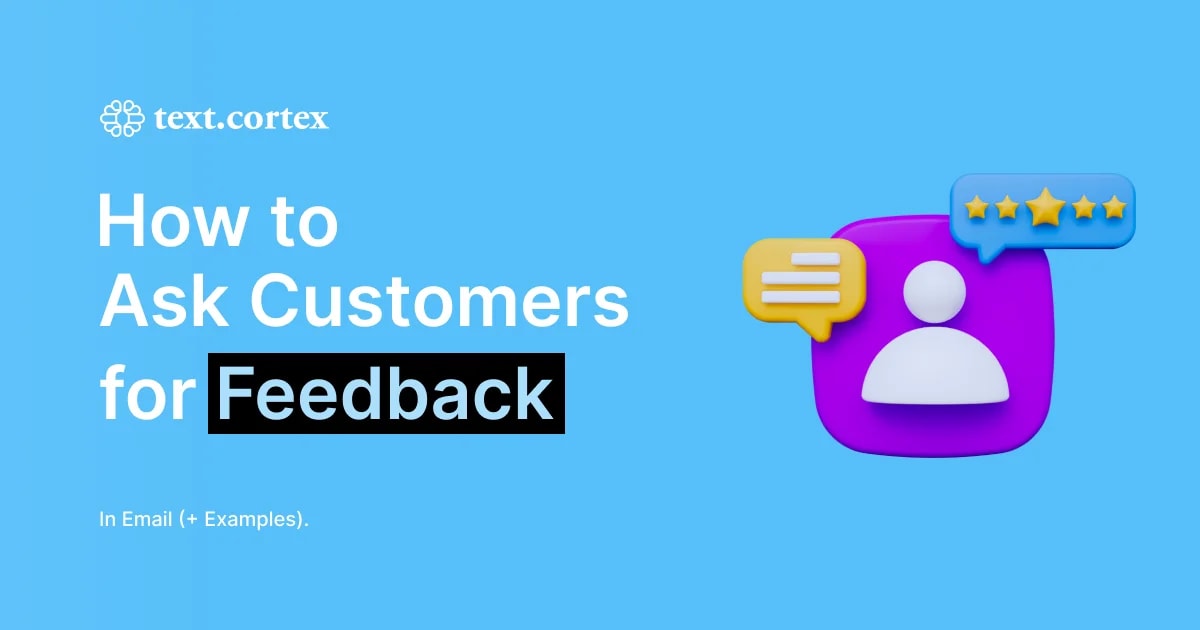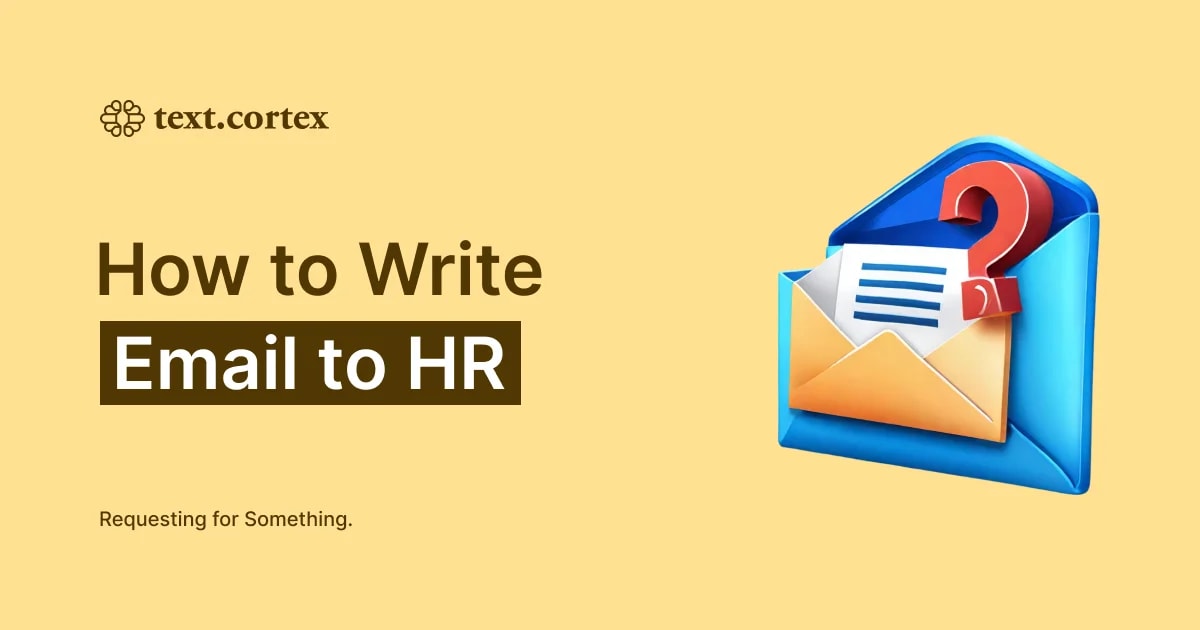When it comes to professional communication, an inbox is a battlefield for attention.
This makes it hard to conquer, right?
But what happens when that subject line carries the weight of your resignation?
It becomes more than just words - it's the prelude to a major career move.

In this article, we dive into the art of composing an attention-grabbing, yet respectful, subject line for your resignation email.
We'll reveal strategies to help you make a memorable exit, ensuring your departure is marked by professionalism, grace, and a smooth transition to your next adventure.
Let's uncover the secrets to crafting that perfect subject line for your resignation email.
What is a Resignation Email?
A resignation email is a type of formal communication in which an employee notifies their employer to announce their decision to leave their current job position.
It is an official record of the employee's departure and is an essential step in the professional resignation process.
Resignation emails typically include:
- the employee's intention to resign,
- the last working date,
- and may briefly mention the reasons for the resignation.
In this type of communication, it is crucial to maintain a professional and respectful tone, as it often becomes a part of the employee's employment record.
Resignation email is a crucial component of the resignation process, signaling the beginning of the transition period for both the employee and the employer.
When is it Mandatory to Send Resignation Emails?
Sending a resignation email is generally considered mandatory in the following common scenarios:
1. Voluntary Resignation ✔️
Employees who leave their current job voluntarily are expected to communicate their decision through a formal resignation email.
This includes situations where an employee has found a new job, is pursuing further education, or has personal reasons for leaving.
2. Resignation with Notice ✔️
In most cases, when an employee intends to resign and provide notice (usually two weeks), it's standard practice to send a resignation email to inform the employer officially.
This allows the employer to plan for the transition.
3. Immediate Resignation ✔️
If an employee needs to resign immediately, such as in a medical emergency or other urgent personal matters, they should still send a resignation email.
It such a scenario, it is best to send an email as soon as possible to formally convey their decision, even if they can't provide the standard notice period.
4. Contractual Obligations ✔️
Some employment contracts or company policies may stipulate that resignations must be submitted in writing.
In such cases, sending a resignation email is mandatory to fulfill these contractual or policy requirements.
5. Professionalism and Documentation ✔️
Sending a resignation email is a matter of professionalism. It serves as a formal record of the resignation.
It provides both the employee and the employer with written documentation of the decision, which can be necessary for legal or administrative purposes.
6. Exit Interviews ✔️
Many companies require employees to send a resignation email as a precursor to an exit interview.
This helps understand the reasons behind the resignation and gather feedback that can be valuable for the organization's improvement.
7. Company Policy ✔️
Some companies have specific policies and procedures for resignations, including the requirement to submit a resignation email as the first step in the process.
When resigning from your job, it is crucial to adhere to your company's guidelines and policies.
If you need clarification on the procedure, it is recommended that you consult with HR or your immediate supervisor to ensure that you meet all the requirements while maintaining professionalism throughout the process.
Now that we have all essentials, it is time to learn how to write subject line for resignation emails.
Let’s jump into it!
Subject Line Essentials for a Resignation Email
1. Keep it Clear and Direct
A clear and direct subject line in your resignation email is crucial.
It eliminates ambiguity, ensuring the recipient immediately understands the email's purpose.
This clarity promotes professionalism, respects the recipient's time, and sets a positive tone for the resignation process.
It also emphasizes transparency and straightforwardness during this important transition.
2. Include Your Name
Adding your name to the subject line, like "Resignation - John Smith," is essential for clear identification.
It eliminates confusion in the recipient's inbox, adds a professional touch, and aids future reference.
It also reinforces accountability for the resignation decision.
3. Mention the Word "Resignation"
Using the word "resignation" in your subject line, as in "Resignation - Jane Doe," is essential for immediate clarity.
It leaves no room for ambiguity, maintaining a formal and professional tone.
Additionally, it aids in email organization, simplifying correspondence tracking during the resignation process.
4. Include Your Last Working Date
Including your last working date in the subject line of your resignation email is vital.
For example, "Resignation - Last Day: September 30th - Mark Johnson."
This practice offers immediate clarity about your departure, aiding your employer in planning and avoiding misunderstandings.
It also demonstrates professionalism, commitment to a smooth transition, and simplifies email organization for future reference.
5. Be Professional
Maintain a professional tone in your subject line — avoid using emojis, slang, or informal language. It's a formal communication.
This reflects your seriousness and respect for the formalities of the resignation process, showing that you take your career and professional relationships seriously.
A professional subject line also aligns with workplace norms and expectations, ensuring that your resignation is handled with the necessary decorum.
Lastly, it helps maintain a positive and respectful tone throughout the resignation process, fostering goodwill and ensuring that the transition is as smooth as possible for both you and your employer.
6. Avoid Negative Language
Maintaining a neutral and professional subject line in your resignation email is essential, even if you're departing due to work-related issues.
Negative or accusatory language should be avoided to promote respect and a constructive tone throughout the process.
This approach helps prevent misunderstandings and preserves professional relationships.
A positive and neutral subject line reinforces the perception of a thoughtful decision rather than an emotional reaction, facilitating a smoother and more collaborative transition for both you and your employer.
7. Keep it Short
Short subject lines are crucial for clarity and prompt attention.
They help recipients quickly understand the email's purpose, especially in busy inboxes.
This brevity aligns with professional norms, respecting the recipient's time and promoting a formal, appropriate tone for important career announcements.
8. Consider Your Company's Culture
Considering your company's culture is crucial when crafting a resignation email subject line. And, each organization may have its own norms for this process.
Adhering to these norms demonstrates respect for your employer's values and ensures your subject line aligns with the company's tone and style.
This adaptability promotes a smoother transition and professionalism.
Now that you know the key elements to include in your subject line for resignation email, there are 2 more things we’ve left to cover — examples and tips to do it yourself.
6 Resignation Email Subject Line Examples
Here are a few examples of resignation email subject lines:
💡 "Resignation - [Your Full Name]"
💡 "Notice of Resignation - [Your Last Day of Work]"
💡 "Formal Resignation Letter - [Your Name]"
💡 "Regretful Resignation - [Your Name]"
💡 "Submission of Resignation - [Your Name]"
💡 "Resignation Effective [Last Day] - [Your Name]"
💡 "Transitioning to New Opportunities - [Your Name]"
💡 "Professional Resignation Notice - [Your Name]"
💡 "Moving On to New Horizons - [Your Name]"
💡 "Farewell and Resignation - [Your Name]"
These subject lines maintain a respectful and professional tone while clearly conveying your intention to resign.
Remember to replace "[Your Name]" and "[Last Day]" with your actual name and the date of your last working day when using them.
Write Your Subject Line for A Resignation Email Using TextCortex
TextCortex is an exceptionally versatile tool, offering a wide range of applications suitable for various writing needs across different professions.
When crafting your resignation email subject line using TextCortex, you have three options at your disposal:
- Manual Writing and Editing — You can write and edit the subject line manually to suit your specific needs.
- AI-Generated Subject Line — TextCortex can generate a subject line for you using its AI capabilities.
- Generate Subject Line with Predefined AI Templates — Alternatively, you can utilize predefined AI templates to assist in creating your subject line.
No matter which option you select, TextCortex's advanced writing features empower you to accomplish this task efficiently and with a high degree of professional accuracy.
It offers a range of features designed to enhance your writing across various purposes.
✍️ Content Rewriting — TextCortex can efficiently rewrite content, ensuring clarity and coherence.
✍️ Bulk Translation — It supports bulk translation tasks, making it invaluable for multilingual communication in 25+ languages.
✍️ Grammar and Spelling Check — It helps users stay on top of grammar and spelling errors, ensuring professional-quality writing.
✍️ Personalized Responses — TextCortex can generate personalized responses, enhancing communication with a human touch.
✍️ Contextual Rephrasing — It excels in rephrasing text to maintain context while improving readability.
✍️ Content Summarization — Users can rely on TextCortex to create concise summaries of lengthy content.
✍️ Tone of Voice Adjustment — It allows users to adjust the tone of their writing to suit various contexts.
✍️ Readability Assessment — TextCortex can assess the readability of content, ensuring it's comprehensible to the target audience.
✍️ Article Generation — It can transform concise ideas into comprehensive articles, saving time and effort.
✍️ AI Templates — With over 60 AI templates, TextCortex facilitates the creation of various types of content.
One of the most useful features of the TextCortex solution is ZenoChat.
It is an advanced conversational AI that can quickly integrate web sources to provide users with accurate answers to specific queries.
Additionally, it is capable of producing various forms of content, along with carefully crafted prompts that specify the desired outcome.
This makes ZenoChat an efficient and effective tool for writing and accessing information.
How to Use It?
Using ZenoChat is a simple process:
1. Craft Your Prompt — Begin by formulating your query or prompt. Be clear and specific about the information you seek.
2. Choose a Persona — Select a persona or style of communication that aligns with your research needs. ZenoChat offers various personas to cater to different contexts.
3. Activate Web Search Option — Enable the web search option to allow ZenoChat to access and retrieve information from the internet. This step is crucial for obtaining up-to-date and relevant data.
As for the Rewriting tool:
1. Activate the Extension — Within your web browser, activate the TextCortex extension.
2. Immediate Editing Assistance — Once the extension is active, hover over the text you wish to modify, and TextCortex will provide immediate editing suggestions and assistance.
These straightforward steps ensure that you make the most of TextCortex's capabilities for research and writing tasks.
Ready to supercharge your productivity and professionalism?
Join us today to experience faster research, precise answers, and effortless writing with TextCortex superpowers! 🚀


.webp)

